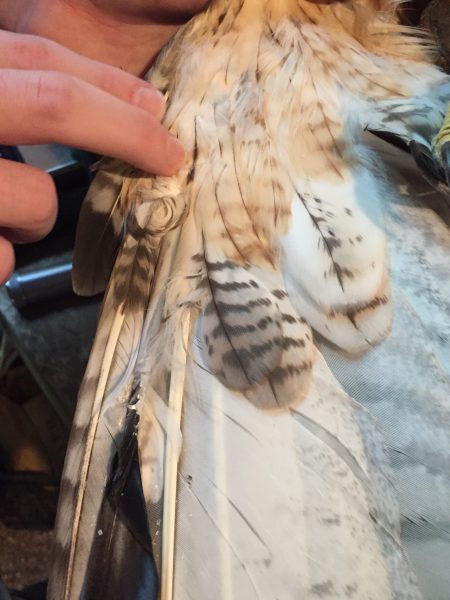Ever wonder about the Radical Raptor, Beauty, who calls Upham Woods home?
Even though Beauty is in captivity, during nesting season, she will act like she is building a nest on the ground. This is a natural behavior for her because she was not always in captivity. Red tailed hawks make very large nests and start laying their eggs in April. Red tailed hawk nests can get as large as 3 feet wide.
After nesting season, the molting process takes place. Molting is when a bird sheds their old feather to make way for new ones to come in. Feathers need to molt because they are made out of keratin-based structures similar to our hair and finger nails, which get damaged over time and need to be replaced. One sign that a bird is molting is pin, or blood feathers. It is called a blood feather because an artery or vein extends up through the feather follicle to supply it with nourishment.
While Beauty was molting she had a vet checkup with UW Zoo medicine resident Cameron Ratlift and Director of Conservation Medicine at International Crane foundation Barry Hartup. They gave us a closeup look of Beauty molting her 2 nd primary feather on both sides. During this exam we also learned that Beauty was a healthy weight and needed a minor beak trim.


